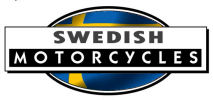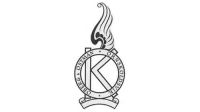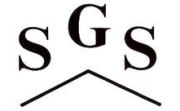




This page lists brands for which we currently have only an historical precis.
For a more complete listing visit the Swedish Index.
Apollo 1930s-1960s
Bison
Built by Bill Nilssons, the 1979 Bison engine was a CCM Weslake top end glued to a set of HVa crankcases. (The first Husqvarna fourstroke did not appear until 1983.) A later Bison had a Hedlund top end and was a real head-turner.
Bill was an excellent off-road rider, winning the 1957 MX World Championship. His earlier machines included an AJS 7R scrambler (now restored and stunning) and a Petit Metisse with an Eso engine.
Source: Lindstrom MX
BKS 1960s MX
Blixt
Velocipedaktiebolaget Lindblad, Stockholm, sold many different mopeds supplied by Nymans and rebadged as Blixt under an agreement between the companies made in 1931.
Models included the 1953 Autoped, 1955 40cc Packmoped and 1956 Blixt Saxoped,
Source: mop-ed.se
Bricent
A.B. Hjalmar Stendahl, Norrköping.
Models:
Brage
Bicycle manufacturer Hedlunds (Hedmora) produced a light motor bicycle powered by a Ragne Junior 184cc engine in 1937, an example of which is displayed at the Hedemora MC Museum.
The firm sold a moped powered by an AMO engine in the early 1950s.
Sources: mop-ed.se; Wikipedia.
Carle 1912
Carolus
Manufactured Enköping 1925-1930
The brothers Karlsson built some 100 lightweight motorcycles to order using engines built by Ludwig Widesson of Stockholm. The motorcycles were sold by a local dealer, who later built very similar machines under the name Ragne.
Source: Bjorn's Story
Centrum
An example of this marque exists in a Swedish museum equipped with a 3-speed 150cc JB two-stroke engine. It has a tubular frame, telescopic forks, rigid rear and a solo saddle, and appears to be from the early 1950s. There was also a 1955 JLO 250cc twin.
This is actually a Monark, rebadged as a department store brand, in German a kaufhaus.
Source: Bjorn's Story, ig-jlo-twin.eu
CMB
Manufactured by Cykel och Motordepån, Borlänge, 1960-68
The firm marketed a large range of parts for motorcyclists, and also built enduro-style motorcycles in the 1960s. A 1963 machine had a 246cc engine of their own design and Earles-style forks. A prototype of 1968 had a Zundapp 100cc engine
Source: Lindstrom MX
Combi
Initially built by Combi Motor and Hildor Jansson in Stockholm, and then by Björn Hansson who also built the "Trio". Constructed during the mid-1960s, most if not all were powered by Triumph twins with the exhaust headers having the appearance of lower frame tubes. With the headers painted the same shade of blue as the frame, the Escher-like visual result is bewildering.
Source: Lindstrom MX
Copy SE
Built by Sten Eliasson of Lidköping using Matchless/AJS engines, they were raced by Rune Unger, Rolf Larsson and Olle Sterner from 1962 to 1964.
Source: Lindstrom MX
Drott
Manufactured by Velociped AB Lindblad, Stockholm, c.1922
Lindblad, founded 1896, was primarily a bicycle manufacturer. They also built light motorcycles with bicycle attachment engines.
Source: Zabytkowemotocykleirowery Poland
DS David Senning, 1924-1927
Eiber
Svensk Motorindustri of Örkelljunga built motorcycles in 1926 with a 250cc engine of their own design with the intention of selling through Nymans who, as it turned out, purchased only the engines. This apparently caused the company to fail. It was purchased by Suecia and went on to bigger and better things.
Source: Bjorn's Story
Eksjö Honda
Nisse Wedin and Janne Sjölander built a series of MX machines using Honda engines mounted in Husqvarna frames between 1976 and 1979. Of the 20 or so motorcycles constructed, 10 were delivered to MC-Tjänst in Eksjö, the remainder being ridden by Nisse, Jan, and their compatriots.
Source: Lindstrom MX
Elmo
Emil Lindblom, Njurunda.
The bicycle firm sold rebadged Husqvarna mopeds in 1954.
Source: mop-ed.se
FLM
Frode Lund, Malmö.
Built a pretty moped in 1956 using a frame from Monarch, and a Puch engine.
Source: mop-ed.se
Folan
Lars Nilsson, who had been a motocross racer and an engineer with Husqvarna, partnered with Fredy Olson to buy the motorcycle production machinery from Husqvarna in 1994 after it ceased manufacture. They developed a 60° V twin engine which piqued interest from both CCM and Sachs, the latter equipping their "Beast" prototype with a Folan engine. Marine and light aviation companies also took note, however the new firm took a different direction and took an American partner to form MCM which created a new brand, Highland. Things did not go to plan.
Folan is an acronym of the partner's names.
Source: wikipedia.nl
Furir
Manufactured by Emil Jern in Gävle 1915-1916, these were bicycle attachment engines. The firm moved to Stockholm around 1918 and became Colibri.
Source: Bjorn's Story
Gladiator
Manufactured by K.G. Karlsson of Skövde, 1912-1919
These were lightweights using an inclined engine, with an optional clutch introduced in 1912. The 1912 version had a large cylindrical brass tank, belt drive and pedals, rim brake acting on the belt sprocket, and rudimentary front suspension. Four examples remain, at least one of which has beautifully restored.
A suspicious factory fire resulted in bankruptcy in 1919.
Hägg
Manufactured by G.A. Hägg in Alingsås, Sweden
A 440cc tandem twin engine in a German frame with a 2-speed Sturmey Archer gearbox, the machine was
exhibited as part of the Svärdsjö MC Collection
Source: Bjorn's Story
Hjorten
Hjorten - Åhlén & Holm A:B, Stockholm.
The bicycle firm marketed an Apollo moped in 1956 fitted with a Zündapp Combimot 255
Source: mop-ed.se
HL
Built by Hallman and Lundin, the machine sported a Yamaha TT500 engine in a Husqvarna frame. It was campaigned from 1976 to 1978 by Bengt Åberg, gaining a win in the 1977 Luxembourg GP, 2nd in the 1977 Swedish Championship, and 13th in the World Championship of 1978.
Source: Lindstrom MX
Kuli Engines
A.B. Allmotor, Örebro built hilfsmotor in the 1950s. These were also sold as Rondo
Source: mop-ed.se
N.B. There was also a German Kuli built in the 1920s.
Landsverk
Manufactured by AB Landsverk Armored Motorcycles
Using a Harley Davidson motorcycle, models included:
Sources: tanks-encyclopedia.com, 3-wheelers.com.

Lelles
Manufactured by Lelles of Uppsala, 1962-1963
The firm specialised in Husqvarna Silverpil racing parts and accessories. In 1962 they displayed a two-stroke 250cc motocross machine at the Gothenburg motorcycle show.
Source: Lindstrom MX
Lindberg LT 1960-65
Mustad
Manufactured by AB Mustad & Son, Göteborg
Under licence, it appears, the Mustad scooter was also produced by A/S Folkescooter, København, Hellerup in Denmark and Sports Firmæt GRESVIG, Oslo in Norway. The Danes used a BFC engine, the others an AMO.
Source: mop-ed.se
Mustang 1952-1984
Nordstjärnan
E. A. Renlundin Pyöräkeskus, Kokkola.
The firm sold mopeds 1953-58, all with Sachs engines. They were related to Wiklunds.
There was also a Nordstjernan of 1915, based on an FN Four.
Source: mop-ed.se
Nornan
Maskinaffären Centrum i Tobo. AB Cykelfabriken Monark, Varberg.
The firm sold rebadged Monark MCB mopeds fitted with NSU engines, 1953-1954
Prior to entering the motorcycle market, like Ducati they were specialists in radios.
Source: mop-ed.se

OK
Öberg & Östman, Örnsköldsvik
The firm marketed mopeds 1958~1964. Associated with the Fram and Bricent marques, some of their sales brochures were identical other than the logo.
Source: mop-ed.se
Original
Marketed by Carlström & Son, Emmaboda, Sweden.
Sold the Original model 2000 with a Sachs 50 cc engine. With extensive fairing of front and rear guards, tank and headlight in one unit, it was a very stylish machine.
Also sold Autopeds from Nymans.
Source: mop-ed.se
Örnen 1953-1958
Park
Around 100 motorcycles were built by Carl Park before his untimely death in 1916. The motorcycles used an NSU frame and a 500cc V-twin engine of Park's own construction. Some were sold to the military with Park's patented ski attachment.
Source: Bjorn's Story
Pello
Marketed by Optimex AB Sveavägen 81, Stockholm.
Sold the 48cc 1953 Pellegrino Brunetta from the Italian firm Nassetti.
Source: mop-ed.se
Piccolo
Manufactured and sold by AB RESEXO, Sundbyberg.
In 1954 they produced a scooter moped with an Eolo engine from Italy.
Source: mop-ed.se
Rambler
Manufactured by Albert Öhman A-B., Stockholm.
Possibly active as early as 1903, in the 1950s they sold mopeds supplied by NV Nyman and rebranded.
Models included the Rambler Saxoped, Flink and Victoria hilfsmotor. 1958 saw the appearance of the Rambler 2010 and 2015 with 2 and 3 speed Sachs engines (preceded by the 2000 model). There were various Transportcykel (3 wheelers) and in 1963 they began selling Tomos mopeds.
Source: mop-ed.se
Scotty
AB SCOTTY Kalendegatan 16, Malmö.
The firm marketed a rather odd little scooter powered by an HMW engine, designed and possibly built by Borghammar & Lund of Malmö.
Source: mop-ed.se

SGS
Stig Larsen came 9th on an SGS in the Swedish Grand Prix in 1964.
A snippet from an article by Nisse Wedin at lindstrom-mx.se:
"For the 1965 season, Stig Larsson transferred to ESO Metissé and Jeppsson was left alone at SGS. The following year, Sven had put together a new frame for the ESO engine, and it was a copy of the bike that Bill Nilsson rode. Jeppa wanted to try something new and picked over his Lito engine in the Metissé chassis that Stig got over. The SGS chassis was observed in the attic, and it is from the pieces Sven built together a new SGS, but with BSA-AIbin engine this time."
Source: Lindstrom MX
Söderblom
Built lightweights of 188cc in the early 20th century, one of which was bought by Carl Persson-Park.
Source: Bjorn's Story
S.O.K. 1920s
Sölve
Carl H Clausen produced the Sölve at AB Sölvesborg's Foundry & Mechanical Workshop. Production figures were low and only a few remain.
The unit pictured has a 243cc four-stroke engine.
Source: Bjorn's Story. Image from Wikipedia.
Stanley
Built by AB Tobo, using Pilot engines from RMW in Germany. There was a relationship with Monark.
Source: mop-ed.se
Surrac
Manufactured by Sjöstrand in Dalarna
In 1914 a 280cc two-stroke was built, and in 1917 a quite different machine.
Source: Bjorn's Story
Tempus
Arvika-Thermænius AB - Katrineholm.
In the early 60s offered a range of mopeds and light scooters powered by JLO, Monark, NSU engines. It is likely that most if not all of them were built by Monark.
Source: mop-ed.se
TfA Engines
Gottfried Darck developed a 50cc hilfsmotor in the late 40s which was sold to several firms but was not terribly successful. It was mounted on the left side of the rear wheel, suspended from a rack which also supported the fuel tank.
Darck many have been involved in development of the Kuli engines.
Source: mop-ed.se
Trofé
Hagalunds Cykelaffär, Stocksund Klinga sold rebadged HVA (Husqvarna) mopeds.
Source: mop-ed.se
Vimpel
Manufactured in Varberg for Eols and Haakonbolagen (ICA, Västerås).
Vimpel 1963
Source: mop-ed.se
Wasa-Bogie
Manufactured by A.B. Helsingborgs Maskinaffär, Hälsingborg.
A cycle firm, they sold mopeds and light scooters from c1954 to 1959 powered by Sachs and Zundapp engines. Most if not all were sourced from other manufacturers and rebadged.
Source: mop-ed.se
Wici
Manufactured by A-B Heimburgs (Oscar Heimburg), Malmö, 1956~1963
Sold mopeds and light scooters sourced from external suppliers and rebadged.
Models include Wici Lyxmoped, delivery tricycles, the Senior-Moped and others. Powered by JLO, Pilot and NSU engines.
Source: mop-ed.se
Wide
Built motor-bicycles in 1923 using a two-stroke engine of 184cc in a reinforced bicycle frame. Magneto ignition and Amac carburettor were fitted.
Source: wikipedia.nl
Wiklunds
Wiklunds Cykel & Motor marketed the Star moped in 1956. It was built by Nymans & Crescent and powered by a 50cc Fichtel & Sachs engine.
Source: mop-ed.se
WMW
Manufactured in Vara 1913-1915
Two models were constructed, the first a two-stroke of 223cc which ran on kerosene, the second a 275cc four-stroke.
Source: Bjorn's Story